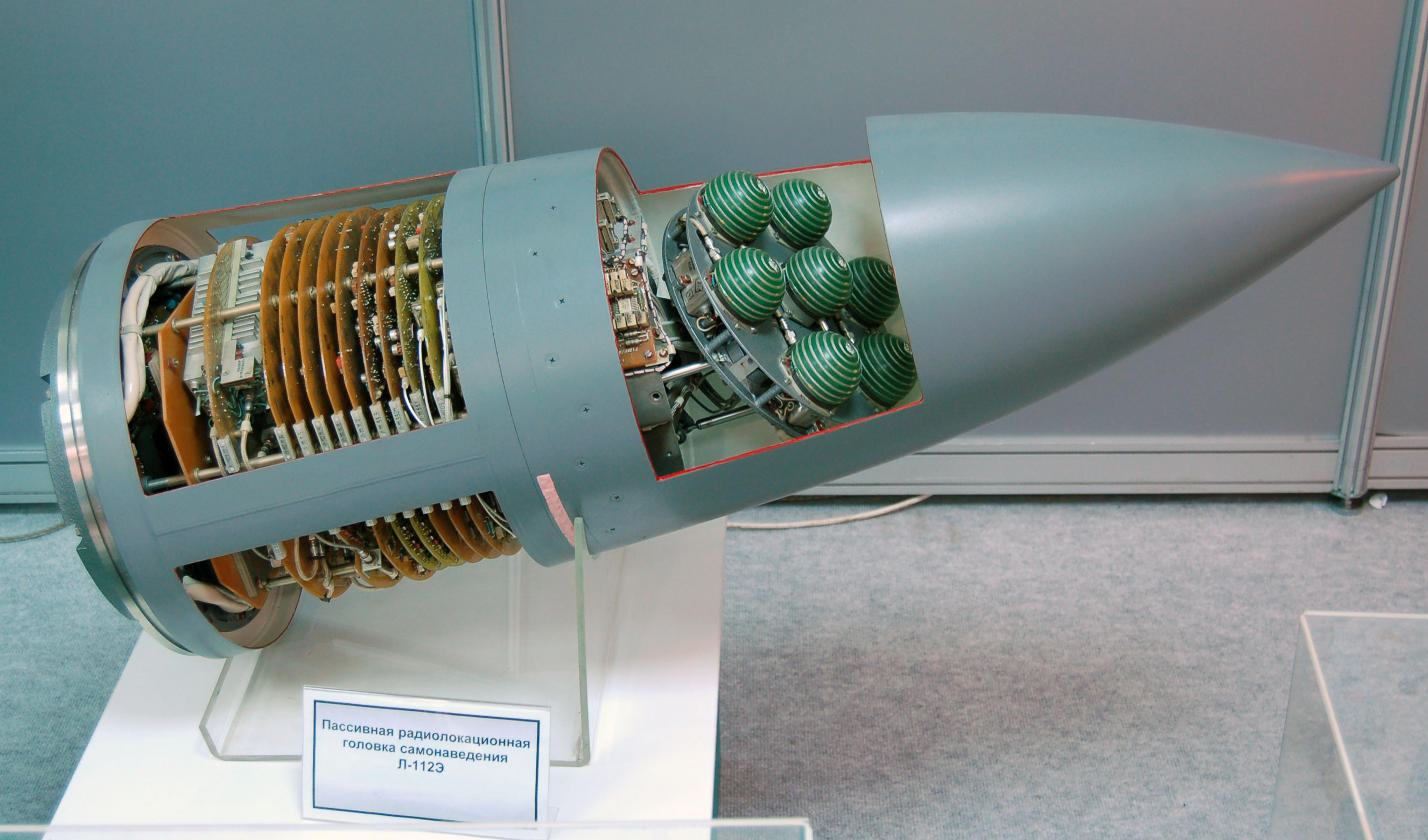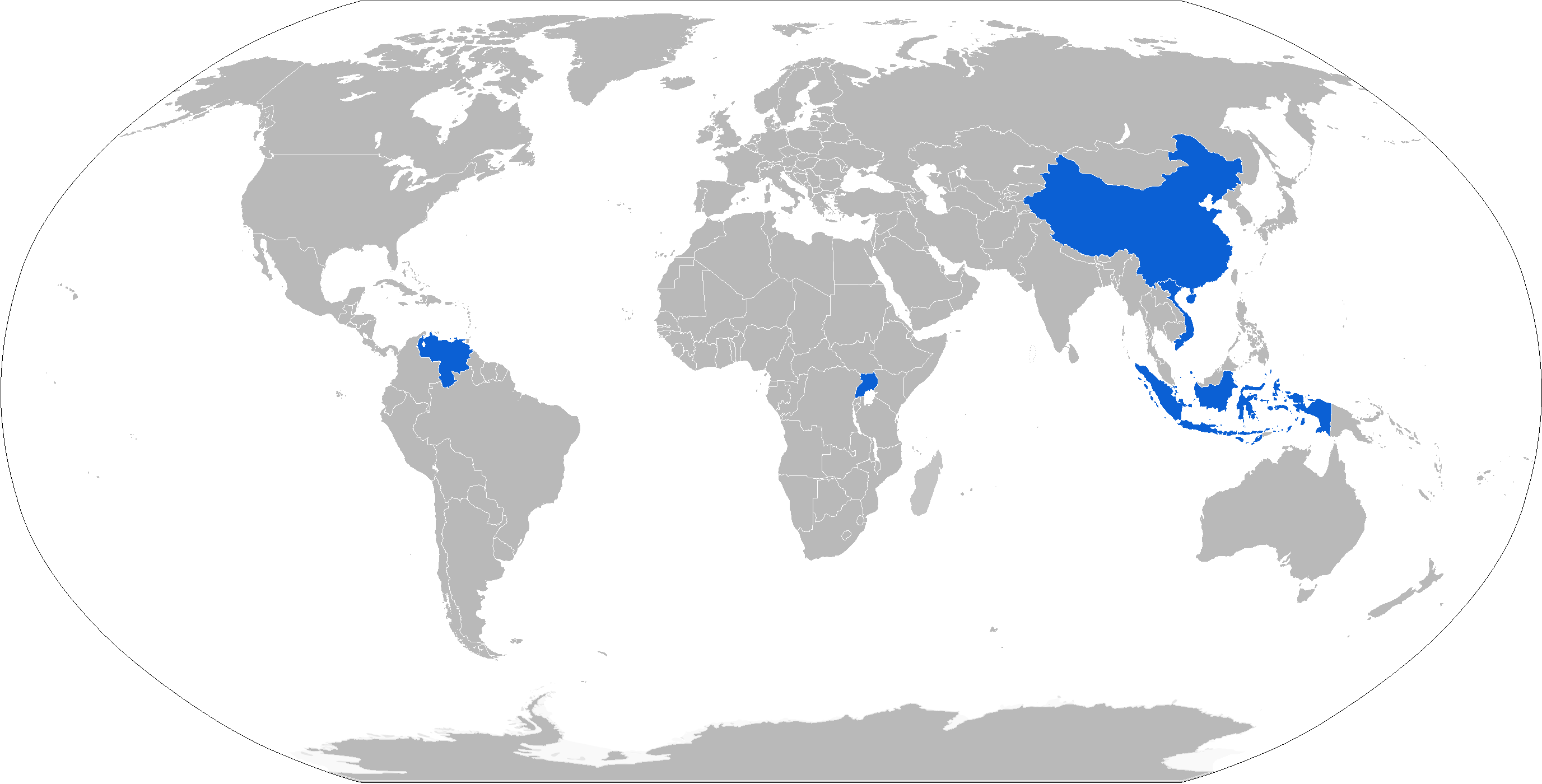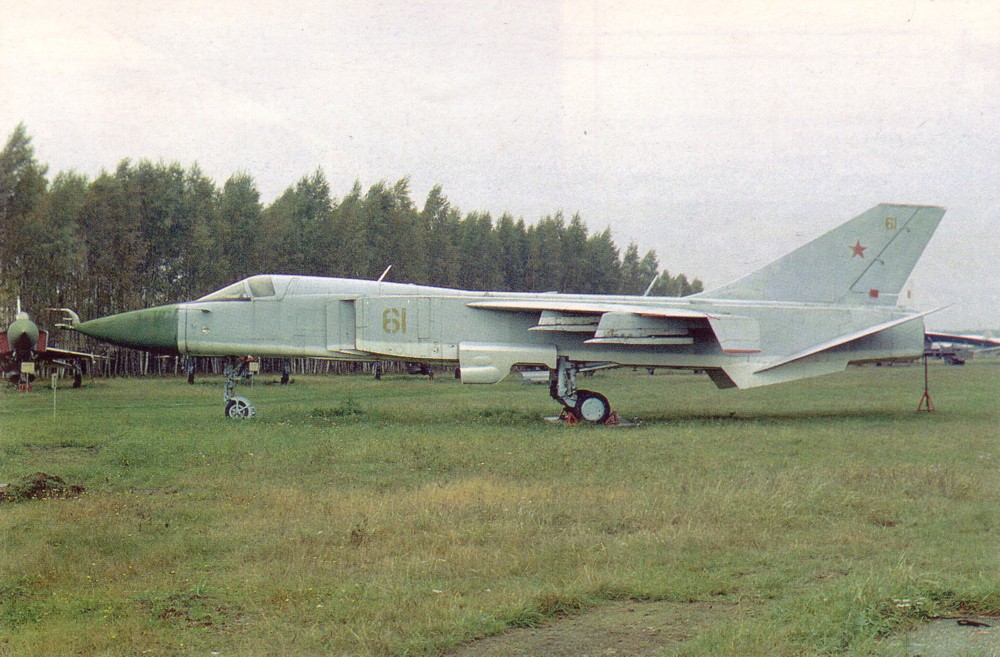|
Kh-31
The Kh-31 (russian: Х-31; AS-17 'Krypton') is a Russian air-to-surface missile carried by aircraft such as the MiG-29 or Su-27. It is capable of Mach 3.5 and was the first supersonic anti-ship missile that could be launched by tactical aircraft. There are several variants; the Kh-31 is best known as an anti-radiation missile (ARM) but there are also anti-shipping and target drone versions. There has been talk of adapting it to make an " AWACS killer", a long-range air-to-air missile. Development The proliferation of surface-to-air missiles (SAMs) has made the Suppression of Enemy Air Defences (SEAD) a priority for any modern air force intending offensive action. Knocking out air search radars and fire control radars is an essential part of this mission. ARMs must have sufficient range that the launch platform is out of range of the SAMs, high speed to reduce the risk of being shot down and a seeker that can detect a range of radar types, but they do not need a particularly ... [...More Info...] [...Related Items...] OR: [Wikipedia] [Google] [Baidu] |
Su-30MKK
The Sukhoi Su-30MKK (NATO reporting name: Flanker-G)MKK stands for Russian ''Mnogofunktzionniy Kommercheskiy Kitayski'' (Cyrillic: Многофунктзионний Коммерческий Китайски), "Multifunctional Commercial for China". is a modification of the Sukhoi Su-30, incorporating advanced technology from the Sukhoi Su-35 variant. The Su-30MKK was developed by Sukhoi in 1997, as a result of a direct Request for tender between the Russian Federation and China. It is a heavy class, all-weather, long-range strike fighter, and like the Sukhoi Su-30, comparable to the American McDonnell Douglas F-15E Strike Eagle. Su-30MK2 is a further improvement to Su-30MKK with upgraded avionics and maritime strike capabilities. The MKK and MK2 are currently operated by the People's Liberation Army Air Force, Indonesian Air Force, Vietnam People's Air Force, Venezuelan Air Force and the Ugandan Air Force. Development The People's Liberation Army Air Force (PLAAF) leade ... [...More Info...] [...Related Items...] OR: [Wikipedia] [Google] [Baidu] |
Su-24
The Sukhoi Su-24 (NATO reporting name: Fencer) is a supersonic, all-weather attack aircraft developed in the Soviet Union. The aircraft has a variable-sweep wing, twin-engines and a side-by-side seating arrangement for its crew of two. It was the first of the USSR's aircraft to carry an integrated digital navigation/attack system. It remains in service with the Russian Air Force, Syrian Air Force, Ukrainian Air Force, Algerian Air Force and various other air forces to which it was exported. Development Background One of the conditions for accepting the Sukhoi Su-7B into service in 1961 was the requirement for Sukhoi to develop an all-weather variant capable of precision air strikes. Preliminary investigations with ''S-28'' and ''S-32'' aircraft revealed that the basic Su-7 design was too small to contain all the avionics required for the mission. OKB-794 (later known as Leninets) was tasked with developing an advanced nav/attack system, codenamed ''Puma'', which would be ... [...More Info...] [...Related Items...] OR: [Wikipedia] [Google] [Baidu] |
Su-27
The Sukhoi Su-27 (russian: Сухой Су-27; NATO reporting name: Flanker) is a Soviet-origin twin-engine supermaneuverable fighter aircraft designed by Sukhoi. It was intended as a direct competitor for the large US fourth-generation jet fighters such as the Grumman F-14 Tomcat and McDonnell Douglas F-15 Eagle, with range, heavy aircraft ordnance, sophisticated avionics and high maneuverability. The Su-27 was designed for air superiority missions, and subsequent variants are able to perform almost all aerial warfare operations. It was designed with the Mikoyan MiG-29 as its complement. The Su-27 entered service with the Soviet Air Forces in 1985. The primary role was long range air defence against American SAC Rockwell B-1B Lancer and Boeing B-52G and H Stratofortress bombers, protecting the Soviet coast from aircraft carriers and flying long range fighter escort for Soviet heavy bombers such as the Tupolev Tu-95, Tupolev Tu-22M and Tupolev Tu-160. The Su-27 w ... [...More Info...] [...Related Items...] OR: [Wikipedia] [Google] [Baidu] |
Tactical Missiles Corporation
, type = Joint-stock company , location = , industry = Defense industry Aerospace industry Space industry , founded = , founder = , hq_location_city = Korolyov, Moscow Oblast , hq_location_country = Russia , area_served = worldwide , key_people = Boris Viktorovich Obnosov (CEO) , products = Precision-guided munitions, Missiles, Ballistic missiles, Cruise missiles, Air-launched cruise missiles, Anti-aircraft missile systems, Anti-ship cruise missiles, Torpedoes, Underwater weapons, Aerial bombs, Glide bombs, Avionics, Electronics, Radars, Spacecraft, Unmanned aerial vehicles, Launch vehicles, Batteries , services = , revenue = , revenue_year = , operating_income = , income_year = , net_income = , net_income_year = , assets = , assets_year = , equity = , equity_year = , owner = Federal Agency for State Property Management (100%) , num_employees = , num_employees_year = , parent = , divisions = , subsid = , homepage www.ktrv.ru, footnotes = JSC T ... [...More Info...] [...Related Items...] OR: [Wikipedia] [Google] [Baidu] |
Active Radar Homing
Active radar homing (ARH) is a missile guidance method in which a missile contains a radar transceiver (in contrast to semi-active radar homing, which uses only a receiver) and the electronics necessary for it to find and track its target autonomously. The NATO brevity code for an air-to-air active radar homing missile launch is fox three. Advantages There are two major advantages to active radar homing: * As the missile is tracking the target it is going to be much closer to the target than the launching platform during the terminal phase, thus the missile's tracking can be much more accurate and better resistant to electronic countermeasures. Active radar homing missiles have some of the best kill probabilities, along with missiles employing track-via-missile guidance. * Because the missile is totally autonomous during the terminal phase, the launch platform does not need to have its radar enabled at all during this phase, and in the case of a mobile launching platfo ... [...More Info...] [...Related Items...] OR: [Wikipedia] [Google] [Baidu] |
Air-to-surface
An air-to-surface missile (ASM) or air-to-ground missile (AGM) is a missile designed to be launched from military aircraft at targets on land or sea. There are also unpowered guided glide bombs not considered missiles. The two most common propulsion systems for air-to-surface missiles are rocket motors, usually with shorter range, and slower, longer-range jet engines. Some Soviet-designed air-to-surface missiles are powered by ramjets, giving them both long range and high speed. Guidance for air-to-surface missiles is typically via laser guidance, infrared guidance, optical guidance or via satellite guidance signals. The type of guidance depends on the type of target. Ships, for example, may be detected via passive radar or active radar homing, less effective against multiple, small, fast-moving land targets. There is some cross-over between air-to-surface missiles and surface-to-surface missiles. For example, there was an air-launched version of the Tomahawk missile, supers ... [...More Info...] [...Related Items...] OR: [Wikipedia] [Google] [Baidu] |
Kh-58
The Kh-58 (russian: Х-58; NATO:AS-11 'Kilter') is a Soviet anti-radiation missile with a range of 120 km. the Kh-58U variant was still the primary anti-radiation missile of Russia and its allies. It is being superseded by the Kh-31. The NATO reporting name is "Kilter". Development The Bereznyak design bureau had developed the liquid-fuelled Kh-28 (AS-9 ‘Kyle’) and the KSR-5P (AS-6) anti-radiation missiles. They merged with Raduga in 1967, so Raduga was given the contract in the early 1970s to develop a solid-fuel successor to the Kh-28 to equip the new Su-24M 'Fencer-D' attack aircraft. Consequently, the project was initially designated the Kh-24, before becoming the Kh-58. During the 1980s a longer-range variant was developed, the Kh-58U, with lock-on-after-launch capability. Since the fall of the Soviet Union, Raduga have offered several versions for export. Design It was designed to be used in conjunction with the Su-24's L-086A "Fantasmagoria A" or L-086B "Fant ... [...More Info...] [...Related Items...] OR: [Wikipedia] [Google] [Baidu] |
Kh-25
The Kh-25/Kh-25M (russian: Х-25; NATO: AS-10 'Karen) is a family of Soviet lightweight air-to-ground missiles with a modular range of guidance systems and a range of 10 km. The anti-radar variant (Kh-25MP) is known to NATO as the AS-12 ' Kegler and has a range up to 40 km. Designed by Zvezda-Strela, the Kh-25 is derived from the laser-guided version of the Kh-23 Grom (AS-7 'Kerry'). The Kh-25 remains in widespread use despite the apparent development of a successor, the Kh-38. Development Based on an air-to-air missile, the beam-riding Kh-66 had been the Soviet Union's first air-to-ground missile for tactical aircraft, entering service in 1968. However it proved difficult to use in practice as the launch aircraft had to dive towards the target. A version with radio-command guidance, the Kh-23, was first tested in 1968 but problems with the guidance system meant that it would not enter service for another five years. So in 1971 work began on a version with a semi-act ... [...More Info...] [...Related Items...] OR: [Wikipedia] [Google] [Baidu] |
MiG-29
The Mikoyan MiG-29 (russian: Микоян МиГ-29; NATO reporting name: Fulcrum) is a twin-engine fighter aircraft designed in the Soviet Union. Developed by the Mikoyan design bureau as an air superiority fighter during the 1970s, the MiG-29, along with the larger Sukhoi Su-27, was developed to counter new U.S. fighters such as the McDonnell Douglas F-15 Eagle and the General Dynamics F-16 Fighting Falcon.Gordon and Davison 2005, p. 9. The MiG-29 entered service with the Soviet Air Forces in 1983. While originally oriented towards combat against any enemy aircraft, many MiG-29s have been furnished as multirole fighters capable of performing a number of different operations, and are commonly outfitted to use a range of air-to-surface armaments and precision munitions. The MiG-29 has been manufactured in several major variants, including the multirole Mikoyan MiG-29M and the navalised Mikoyan MiG-29K; the most advanced member of the family to date is the Mikoyan MiG-3 ... [...More Info...] [...Related Items...] OR: [Wikipedia] [Google] [Baidu] |
Su-7
The Sukhoi Su-7 ( NATO designation name: Fitter-A) is a swept wing, supersonic fighter aircraft developed by the Soviet Union in 1955. Originally, it was designed as a tactical, low-level dogfighter, but was not successful in this role. On the other hand, the soon-introduced Su-7B series became the main Soviet fighter-bomber and ground-attack aircraft of the 1960s. The Su-7 was rugged in its simplicity, but its Lyulka AL-7 engine had such high fuel consumption that it seriously limited the aircraft's payload, as even short-range missions required that at least two hardpoints be used to carry drop tanks rather than ordnance. Design and development Original Su-7 fighters On 14 May 1953, after Joseph Stalin's death, the Sukhoi OKB was reopened"Sukhoi Su-7." ''Sukhoi Company Museum.'' Retrieved: 28 January 2011 and by the summer, it ... [...More Info...] [...Related Items...] OR: [Wikipedia] [Google] [Baidu] |
Su-17
The Sukhoi Su-17 (''izdeliye'' S-32) is a variable-sweep wing fighter-bomber developed for the Soviet military. Its NATO reporting name is "Fitter". Developed from the Sukhoi Su-7, the Su-17 was the first variable-sweep wing aircraft to enter Soviet service. Two subsequent Sukhoi aircraft, the Su-20 and Su-22, have usually been regarded as variants of the Su-17. The Su-17/20/22 series has had a long career and has been operated by many other air forces of including the Russian Federation, other former Soviet republics, the former Warsaw Pact, countries in the Arab world, Angola and Peru. Development Shortly after the Su-7 fighter-bomber was put into service, the Sukhoi Design Bureau was ordered to develop a deep modernization program for the aircraft in the early 1960s. The program would be aimed primarily at updating on-board avionics and the takeoff/landing performance characteristics. The concept of variable-geometry wings - something gaining wider attention at that time - ... [...More Info...] [...Related Items...] OR: [Wikipedia] [Google] [Baidu] |
AGM-78 Standard ARM
The AGM-78 Standard ARM was an anti-radiation missile developed by General Dynamics, United States. It was built on the airframe of the RIM-66 Standard surface-to-air missile, resulting in a very large weapon with considerable range, allowing it to attack targets as much as away. Overview Originally developed for the US Navy during the late 1960s, the AGM-78 was created in large part because of the limitations of the AGM-45 Shrike, which suffered from a small warhead, limited range and a poor guidance system. General Dynamics was asked to create an air-launched ARM by modifying the RIM-66 SM-1 surface-to-air missile. This use of an "off the shelf" design greatly reduced development costs, and trials of the new weapon began in 1967 after only a year of development. The first operational missiles were issued in early 1968. The AGM-78 was nicknamed the "Starm", an abbreviation of Standard ARM. The first version of the missile, the A1 Mod 0, was little more than an air-launched ... [...More Info...] [...Related Items...] OR: [Wikipedia] [Google] [Baidu] |






_(524-20).jpg)
.jpg)


